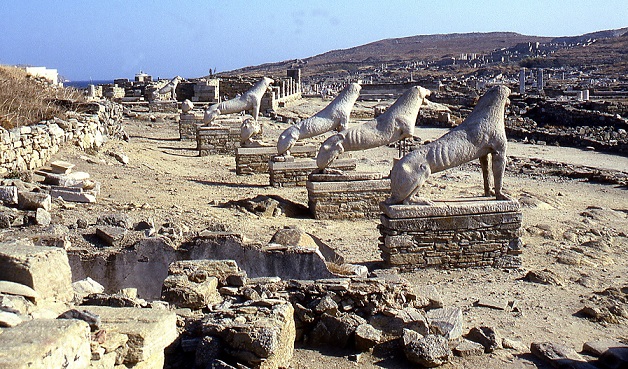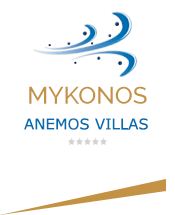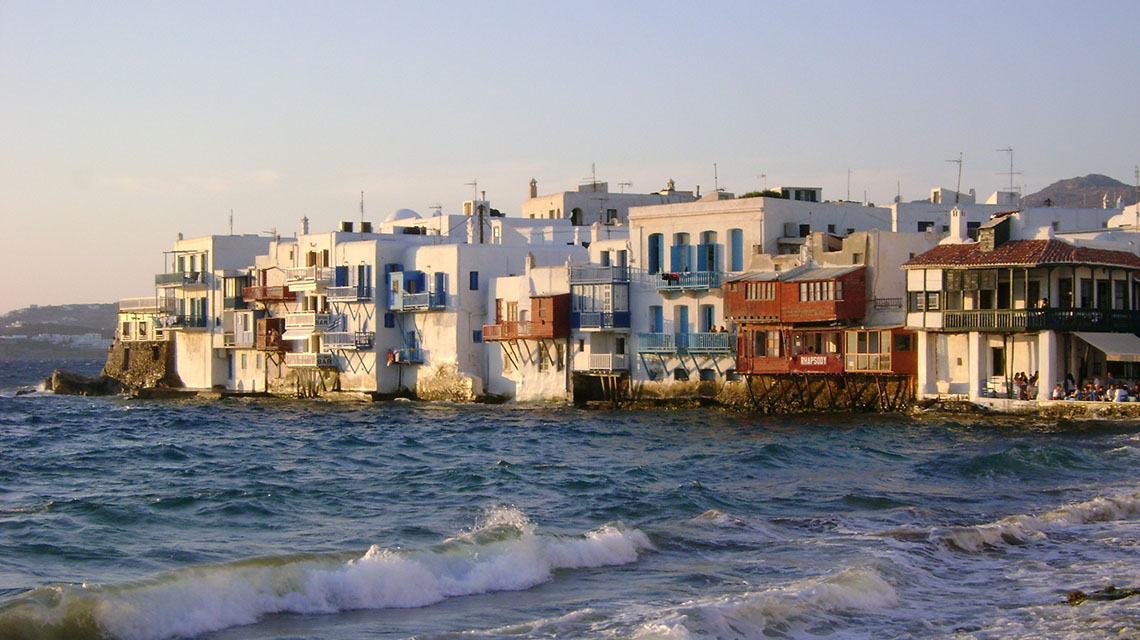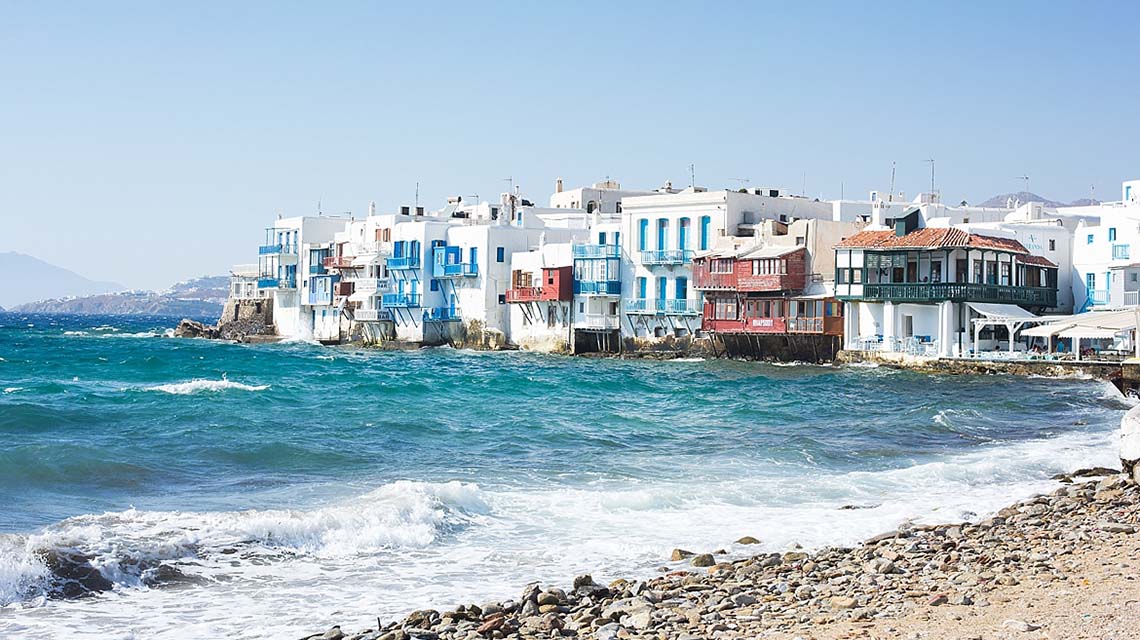Where does the name, Mykonos, come from?
Mykonos owes its name to the son of King Delos, Mykonos. In fact, the history of Mykonos in antiquity was much connected to the history of the neighbouring Delos. According to mythology, Hercules, in one of his twelve tasks, was fighting the Giants and, having killed them, he threw them in the sea where they petrified forming the island of Mykonos. Being in the shadow of the prosperous and spiritual island of Delos, where Leto was believed to has given birth to god Apollo and goddess Artemis, the island was sparcely inhabited in the Ancient Times.
Mykonos through the ages
We know, from excavations on the ancient site of Ftelia, that the first inhabitants of the island were Cares, succeeded by Phoenicians, Egyptians and then Minoans who were followed by the Ionians. Ancient Mykonos developed a great culture and in fact the earliest amphora was discovered on Mykonos, it is known as the Mykonos vase.
In 1207, like the rest of the Cyclades, Mykonos came under Venetian rule. The Gizi dynasty took the authority of the island and built a Castle for its protection. A century later, Georgios Gizi, the last Venetian ruler, concede the island of Mykonos to Venice. In 1537 Mykonos, with most of the Cycladic islands, came under Turkish domination.
 Because the inhabitants of the island were great sailors, they provided important help for the War of Independence, offering their 22 ships, their 500 members of the crew and 140 canons to the Greek Revolution against the Turkish yoke. The heroic revolutionary figure of Mykonos is a woman, Manto Mavrogenous who financed the Revolution, helped in the organisation of fights, participate to the Filiki Etairia (a secret revolutionary organisation) and managed to organise troups in order to revolt against the Turks in 1822.
Because the inhabitants of the island were great sailors, they provided important help for the War of Independence, offering their 22 ships, their 500 members of the crew and 140 canons to the Greek Revolution against the Turkish yoke. The heroic revolutionary figure of Mykonos is a woman, Manto Mavrogenous who financed the Revolution, helped in the organisation of fights, participate to the Filiki Etairia (a secret revolutionary organisation) and managed to organise troups in order to revolt against the Turks in 1822.
 After the Greek Independence, the economy of the island was completely destroyed, it had lost all its ships. Later, the island succeeded in reinforcing their commercial power to rebuilt the economy using the textile, as the most important source of income for the families. In fact, the textile of Mykonos was of such high quality that it was traded around Greece and abroad.
After the Greek Independence, the economy of the island was completely destroyed, it had lost all its ships. Later, the island succeeded in reinforcing their commercial power to rebuilt the economy using the textile, as the most important source of income for the families. In fact, the textile of Mykonos was of such high quality that it was traded around Greece and abroad.
Tourism in Mykonos started to flourish in the early 1960s, when it became the favorite shelter for artists and later for hippies. The archaeological site of Delos became a great attraction and today, Mykonos has become one of the top tourist destinations in Greece. The various classical ruins, ancient sites and other findings are closely associated to the history of Mykonos.







